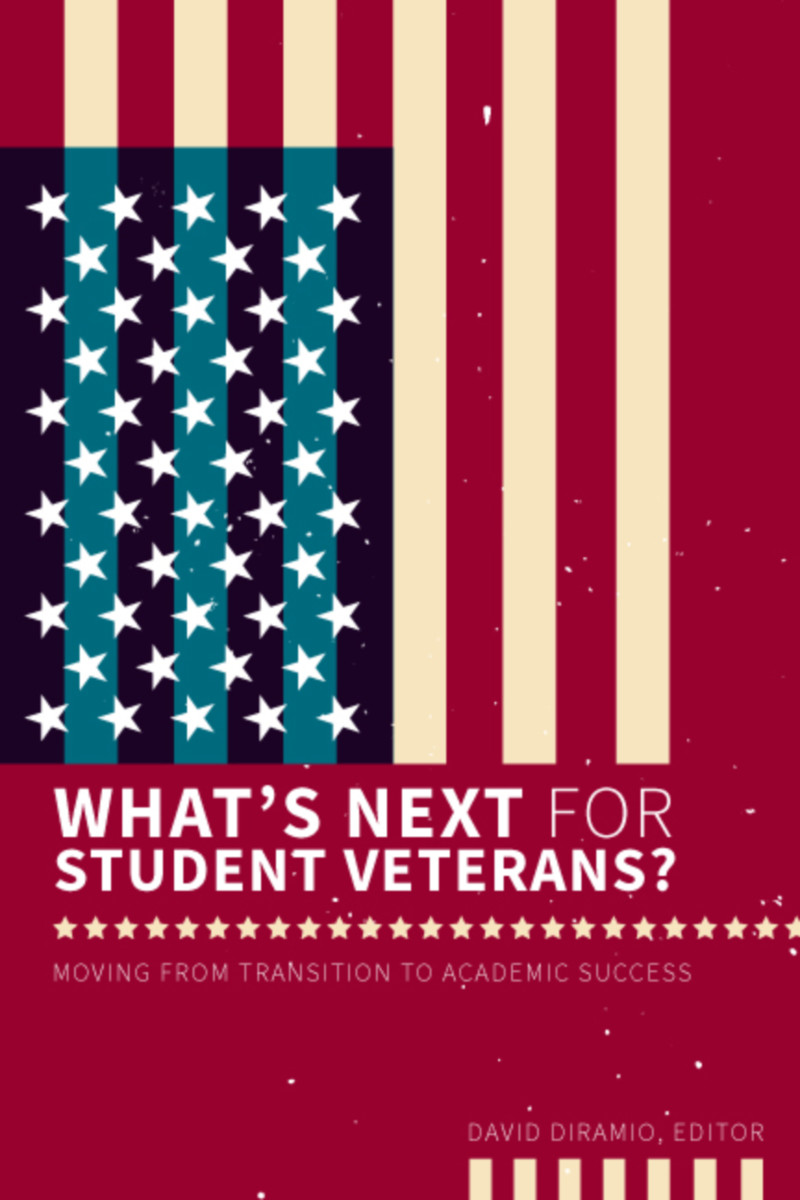PROMOTING SCHOLARSHIP, INFORMING PRACTICE, BUILDING CONNECTIONS
What’s Next for Student Veterans?
Moving From Transition to Academic Success
- Publisher
National Resource Center for The First-Year Experience and Students in Transition - Published
21st December 2017 - ISBN 9781942072102
- Language English
- Pages 265 pp.
- Size 6" x 9"
- Request Exam Copy
Library E-Books
We are signed up with aggregators who resell networkable e-book editions of our titles to academic libraries. These editions, priced at par with simultaneous hardcover editions of our titles, are not available direct from Stylus.
These aggregators offer a variety of plans to libraries, such as simultaneous access by multiple library patrons, and access to portions of titles at a fraction of list price under what is commonly referred to as a "patron-driven demand" model.
- Publisher
National Resource Center for The First-Year Experience and Students in Transition - Published
21st December 2017 - ISBN 9781942072157
- Language English
- Pages 265 pp.
- Size 6" x 9"
E-books are now distributed via VitalSource
VitalSource offer a more seamless way to access the ebook, and add some great new features including text-to-voice. You own your ebook for life, it is simply hosted on the vendor website, working much like Kindle and Nook. Click here to see more detailed information on this process.
- Publisher
National Resource Center for The First-Year Experience and Students in Transition - Published
21st December 2017 - ISBN 9781942072164
- Language English
- Pages 265 pp.
- Size 6" x 9"
- Request E-Exam Copy
With the passage of the Post-9/11 GI Bill in 2008, more than 1.4 million service members and their families became eligible for higher education benefits, and veterans from the wars in Iraq and Afghanistan enrolled in colleges and universities in record numbers. The first wave of research about these new student veterans focused primarily on describing their characteristics and the transition from military service to civilian life and the college campus. This new edited collection presents findings from the second wave of research about student veterans, with a focus on data-driven evidence of academic success factors, including persistence, retention, degree completion, and employment after college. An invaluable resource for educators poised to enter the next phase of supporting military-connected college students.
“The authors are also an assemblage of recognizable names in this area of scholarship, many of whom are veterans themselves or have other military connections. This identity of authors and contributors is critically important, as veterans are widely known to place trust especially (if not exclusively) in fellow veterans and service members. The authenticity of voices found here is therefore quite valuable.
- Teachers College Record
In the preface, DiRamio, himself a U.S. Navy Veteran, introduces this book as a resource intended ‘for the whole of the higher education community’, but especially for those tasked with serving military-affiliated members of any campus community. And indeed, while the broader community of postsecondary researchers and practitioners may find this volume compelling, it is an almost essential resource for anyone tasked with helping this target population.”
“For me, this is one of the more comprehensive works on military-connected students—a very topical and important cohort in higher education today. What’s Next for Student Veterans? should be mandatory reading for those of us who work with this unique set of adult learners and for those who wish to contribute to research in the academy.”
Paul H. Viau, Jr., Associate University Registrar and Director, Veterans Academic Resource Center, University of Central Florida
Foreword, David Blair
Editor’s Preface
Section I: Student Veterans in the 21st Century: Experiences and Perspectives
Chapter 1) Data-Driven Inquiry, Servicemembers’ Perspectives, and Redefining Success, Corri Zoli, Rosalinda Maury, and Daniel L. Fay
Chapter 2) Opportunity, Inequity, and America’s Story: Intersections With Military-Connected Individuals in Higher Education, Andrew Q. Morse and Dani Molina
Chapter 3) The Journey or the Destination: Exploring Engagement Patterns of Disabled Student Veterans, Amanda Kraus, R. Cody Nicholls, and James S. Cole
Chapter 4) Mental Health and Academic Functioning of Student Servicemembers and Veterans in Higher Education: The Importance of Social Support, Adam E. Barry, Shawn D. Whiteman, and Shelley MacDermid Wadsworth
Section II: Student Veterans in the 21st Century: Programs and Academic Outcomes
Chapter 5) Serving Those Who Served: Promising Institutional Practices and America’s Military Veterans, Dani Molina and Tanya Ang
Chapter 6) Navigating Toward Academic Success: Peer Support for Student Veterans, Michelle Kees, Brittany Risk, Chrysta Meadowbrooke, Jane L. Spinner, and Marcia Valenstein
Chapter 7) Completing the Mission II: A Study of Veteran Students’ Progress Toward Degree Attainment in the Post-9/11 Era, Wendy A. Lang and Tom O’Donnell
Chapter 8) Academic Outcomes and the Million Records Project, Chris Andrew Cate
Chapter 9) Where Do They Fit? Applying the Conceptual Model of Nontraditional Undergraduate Student Attrition to Student Veterans, Ryan L. Van Dusen
Chapter 10) Essential Practices for Student Veterans in the California Community College System, Wayne K. Miller II
Section III: Summary, Implications, and Recommendations
Chapter 11) What Next? Charting the Course Before Moving Off the Radar, David DiRamio


